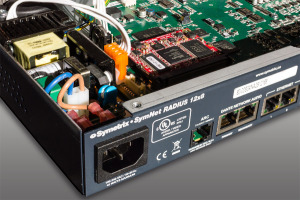A New Dawn for DSP?
Digital signal processing has already brought untold flexibility to a wealth of install applications. But with full-scale networking likely to become the default, could it be that an even more exciting era is just around the corner?
 Alongside the advent of more powerful networking solutions, the emergence of digital signal processing (DSP) that is capable of being implemented quickly and (relatively) easily for all manner of fixed install applications has arguably been the defining pro-audio story of the decade. From Acoustic Echo Cancellation (AEC) for video-conferencing to site-wide routing and distribution, high-capability DSPs have heralded a minor revolution in the built environment.
Alongside the advent of more powerful networking solutions, the emergence of digital signal processing (DSP) that is capable of being implemented quickly and (relatively) easily for all manner of fixed install applications has arguably been the defining pro-audio story of the decade. From Acoustic Echo Cancellation (AEC) for video-conferencing to site-wide routing and distribution, high-capability DSPs have heralded a minor revolution in the built environment.
In an industry that has always paid extremely close attention to the bottom line, it’s unsurprising to discover that lower-cost solutions have done much to initiate the New DSP Dawn. Not only are DSP chips “running at considerably higher MIPS (millions of instructions per second) rates than they were ten years ago, today’s faster chips enable designs that use fewer components – meaning lower costs and increased reliability,” observes Dane Butcher, founder and CEO of Seattle, US-based DSP pioneer Symetrix.
Software developments have also helped to slash DSP costs, with advanced memory management features and higher clock speeds paving the way for designs that, notes Butcher, “use only a single DSP chip to exceed the processing power of designs that used to require four chips.”
Highly effective automixing, loudspeaker management and zone mixing/paging are among the other common applications of these new-generation DSPs. But although their superiority to conventional processing solutions is now unquestioned, the sheer quantity of current DSPs can easily leave the integrator – let alone the end-user – with something of a quandary. So what are the factors that need to be borne in mind when selecting a DSP that is truly capable of delivering the processing power you need?




